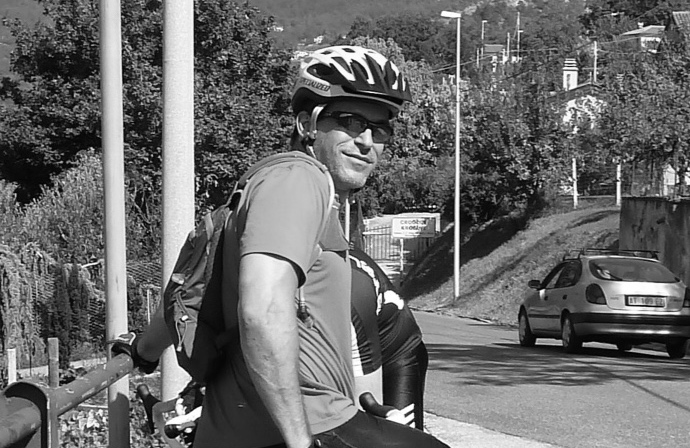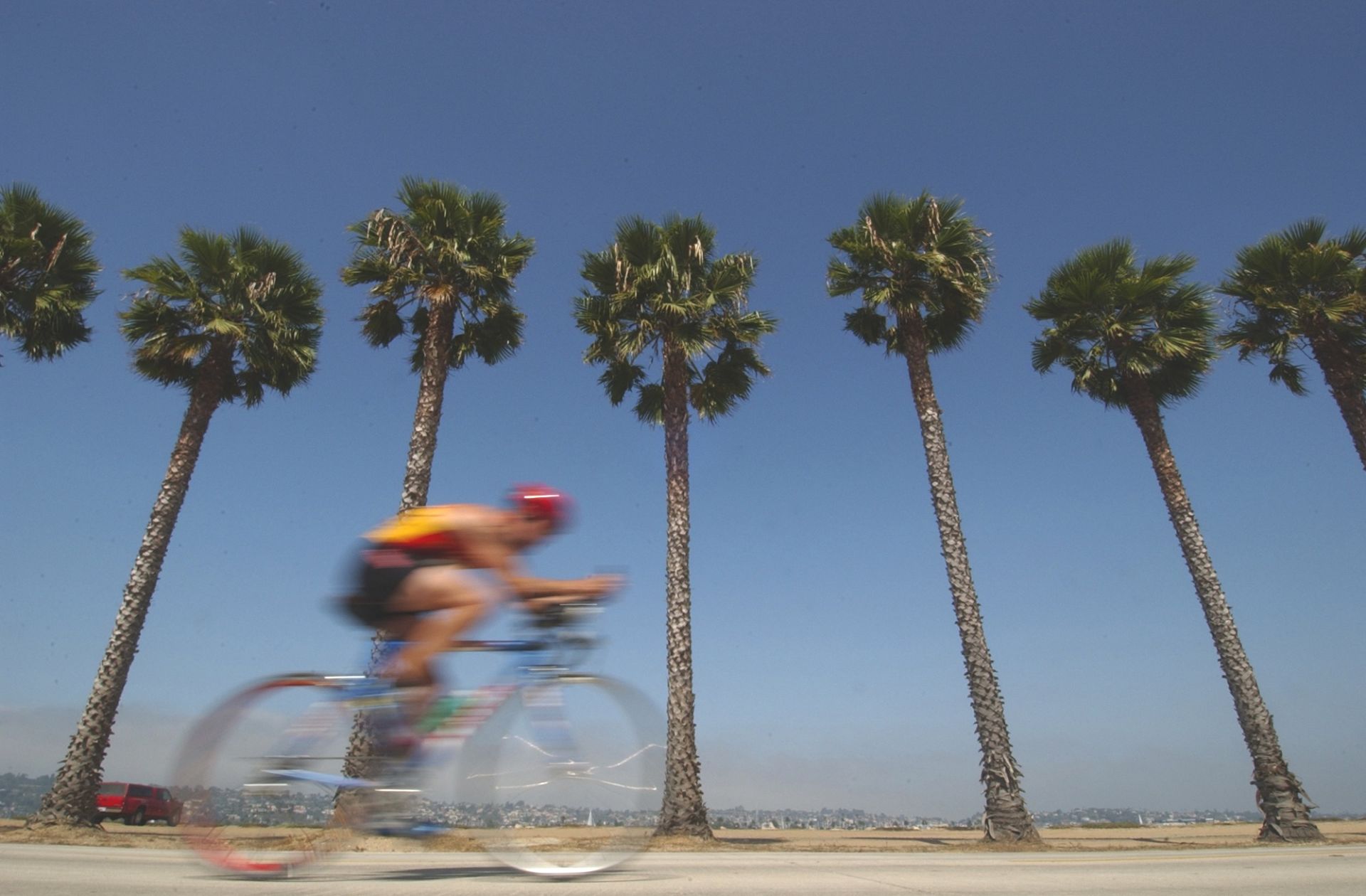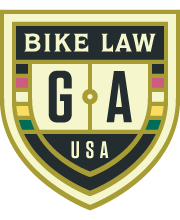When I first teamed up with Peter Wilborn and Ann Groninger to help launch the Bike Law network, there were exactly four states in the network—Maryland and South Carolina, represented by Peter, North Carolina, represented by Ann, and my own state, Oregon.
Since then, the network has expanded to 22 states, and continues to grow. In fact, it is now possible for a cyclist to ride coast to coast, or from our southern border to our northern border, and always be riding in a Bike Law network state. You can now even cross into Canada and still be riding within the Bike Law network!
One of the more recent states to be brought into the Bike Law network is Georgia, ably represented by Georgia bicycle accident attorney Bruce Hagen. Recently, I had a chance to talk with Bruce about bicycle law, advocacy, and of course, lots of great bicycling in the great state of Georgia. Here’s what he had to say.

Bruce Hagen, Bike Law Georgia
***
Bob: Bruce, first, welcome to the Bike Law network. It’s really exciting every time another state is brought into the network. Can you tell me how you became a Georgia bicycle accident attorney?
Bruce: I’ve been a Personal Injury trial lawyer since I opened up my own practice in 1992 with an office in Downtown Atlanta. Since then I’ve represented more than 10,000 clients in personal injury cases and have handled over 200 trials. I’ve tried cases all over the state, although mostly in the Metropolitan Atlanta area including Cobb, Gwinnett, Fulton, Dekalb and Clayton counties.
However, in 2003 I moved my office to Decatur, just down the street from the Dekalb County Courthouse. Decatur, like Roswell, is a hub for bicycling in the Atlanta area and has a great community of cyclists. When I moved to Decatur, I met the lawyer who became my Bicycle Law mentor, Ken Rosskopf. Ken was and remains the Dean of Atlanta Bike wrecks and is widely known and regarded for his advocacy on behalf of cyclists. Ken helped educate me about the unique aspects of representing cyclists. He and I immediately started working on cases together and have remained as working partners ever since 2003.
One of the things I immediately noticed when I started representing injured cyclists was a common attitude of caring less about the money and more about getting healthy enough to get back on the bike. I think I recognized a kindred spirit that has made me motivated to do everything I could to help. I consider myself an athlete (even if only a weekend warrior these days) so I really enjoy representing other athletes. It gives me a chance to feel good about helping people who truly need help and deserve the best that I have to give.
Bob: That’s a great personal story, Bruce. I’ve known Ken for a long time. He’s an old friend and fellow pioneer in bicycle law, and his son Joey Rosskopf is an amazing bicycle racer and currently on the Pro Tour riding for BMC. The relationships we develop with our fellow bicycle lawyers and our fellow cyclists are some of the most rewarding things about representing injured cyclists.
But it’s not always peaches and cream, even in Georgia. Last year there was a shocking incident in Atlanta, when a driver intentionally rammed a cyclist following an argument. The driver fled, but later turned himself in and was arrested and charged with several serious offenses, includingattempted murder. Those kinds of shocking incidents are usually outliers, but they still may indicate a less extreme but still more pervasive level of hostility towards cyclists. And looking at the statistics, Georgia seems to be a state that is firmly mired in the middle in the League of American Bicyclist’s annual rankings. On the other hand, Georgia has eight communities that the League has designated as “Bicycle Friendly,” including Decatur, where your office is located. Can you talk about some of the positive developments in Georgia bicycling advocacy?
Bruce: Although driver attitudes remain a problem, there have been some very positive developments recently. In 2011, Georgia passed a “3 foot” law that requires cars to leave at least 3 feet distance when passing a bicycle. In the most recent legislative session, Georgia passed a law that will allow cyclists to proceed through red lights after stopping if the lights don’t change on their own. This law was necessary because many traffic light sensors are attuned to a vehicle’s weight or are triggered by visual signals, neither of which work for bicyclists. The law is a reflection that our legislators are hearing cyclists’ concerns and are trying to help. Recently, I rode in the 10th annual Ride to the Capitol in which bicyclists from all over the state and places like Roswell, Marietta, Alpharetta, Conyers and Stone Mountain all rallied to show that there is truly strength in numbers. Mayors and local elected politicians from many areas surrounding Atlanta came to the rally and even our Governor Nathan Deal made an appearance and speech. It’s obvious that the folks in the legislature are aware that the bicycling community is watching and that we will be supporting those who support us.
Additionally, the City of Atlanta recently approved $250 Million in bond funds to improve transportation in and around the City. This will include increased dedicated bike lanes and other measures to make the roads safer for cyclists and hopefully cut down on driver frustration. While it remains to be seen how the money will be spent, it is obvious that the City would like to encourage more bicycle riding for commuters, athletes and recreational riders alike and is looking to improve its infrastructure to make that happen.
Bob: Those are some great success stories. But obviously, there’s always room for improvement. Even here in Portland, the League’s first Platinum-level city, there’s a grass-roots movement by cyclists to strip the city of its Platinum designation, because many cyclists feel that for too long, the city has been content to rest on its laurels instead of continuing to make improvements. So what is the other side of the coin on these success stories in Georgia—what does Georgia need to do most urgently to improve bicycling within the state?
Bruce: Georgia is a state that encourages car usage. We don’t have a great public transit system. As Georgia grew, and Atlanta in particular, we added and widened roads to accommodate the sprawling population, but didn’t do so in a manner that planned for or accommodated bicycling at all. Life in the Atlanta area is incredibly car dependent.
Improving bicycling will require a commitment first to make roads safe for cyclists, while at the same time allowing for the free flow of motor vehicle traffic. Coexistence will be key. As an example, I was riding in Buckhead last week, a neighborhood in Atlanta. Buckhead offers great opportunity for people to leave near their jobs and also great shops, restaurants and stores. Yet there’s nothing to encourage bicycle or pedestrian traffic at all. Everyone drives from place to place, even a quarter mile at a time. Bike lanes, bike racks and pedestrian crossings are needed to encourage people to get out of their cars and enjoy a great neighborhood the way it was meant to be enjoyed.
Along with infrastructure improvements, we need to do more to educate law enforcement on bicyclists’ rights and to raise their sensitivity to the plight of cyclists. I see some awful accident investigations involving my injured cyclist clients. Whether due to ignorance or lack of concern, police are too quick to blame bicyclists for causing wrecks that aren’t their fault. It’s as though they stop investigating once they see that there’s a cyclist involved. I think fixing this issue is a matter of local advocacy groups and police working together to better understand each other.
Bob: I think it’s a common experience for bike lawyers to have seen cases where the police showed up at the scene of a crash, saw that a cyclist was involved, and decided that the cyclist was the one at fault, even when it’s obvious that the driver caused the crash. And unless the lawyer specializes in representing cyclists injured in bicycle accidents, the lawyer may not even realize what is happening. This is one of the reasons that the Bike Law network is so important—injured cyclists are finally being represented by experienced attorneys who specialize in bicycle accident cases, and who are avid cyclists themselves. Can you tell me about any of the bicycle accident cases you’ve handled, and what makes that case memorable for you?
Bruce: I’ve handled many and it’s hard to single one out. I had an interesting case for a cyclist who was badly injured on the Silver Comet Trail that starts in Smyrna in Cobb County and runs West to the Alabama state line. It was one of the first “Rails to Trails” projects and created a great place for a long ride or just a nice recreational stroll. Cyclists are everywhere but there are a few street crossings, and this particular client was run down by a careless driver. There were some unique issues regarding the client and his job that made this case especially challenging.
I had another case for a client who was riding on the Stone Mountain trail from Decatur when she was caught under the arm by a guy wire from a utility pole that came down at a dangerous angle. There were numerous ways to secure the pole that wouldn’t have exposed cyclists to this very dangerous hazard, and we were successful in getting the utility company both to cure the dangerous condition and to compensate the client fairly for her injuries.
One of the cases I’m working on currently is particularly interesting and involves a fork failure on a popular bicycle model. My client was a bicycle commuter and suffered terrible injuries when the fork essentially sheared off after he went over a slight bump while he was riding in the Emory University area. We are closely examining the bicycle and its components and working closely with experts in the manufacturing process as well as a metallurgist to determine the cause of the failure. We intend to hold the manufacturer responsible for putting a defective product on the market.
Bob: Those are some great examples, Bruce, and having a network of like-minded bike lawyers to talk with and compare notes with is one of the great resources we all have in the Bike Law network.
There’s another great resource in this network—we all love to ride, and we all have our favorite rides to talk about. Can you tell us about some of your favorite rides around the state?
Bruce: There’s a ride that I do that starts in Dunwoody and works through surrounding areas of Chamblee and Doraville before coming through Sandy Springs, down through Marietta and into the Columns Drive section for a sprint, then back through Sandy Springs and Dunwoody again. There are some great climbs and descents along the way and I can avoid the busiest roads. It also allows me to go through some really pretty areas in the Chattahoochee National Park and along the Chattahoochee River.
For longer rides, I love getting out on the Silver Comet Trail. My preference is to start about 10 miles or so in Powder Springs and head through Dallas and Hiram in Paulding County all the way to Cedartown in Polk County. There’s a nice little downtown with some lunch spots that are very welcoming to sweaty old men on bicycles so it’s a nice place to break before turning around.
For mountain terrain, you can’t beat the area around Blue Ridge in Fannin County and Ellijay in Gilmer County. Both places offer fantastic rides with great windy roads and scenic vistas. For mountain biking there are incredible networks of single-track trails and wider logging roads to accommodate all levels.
One of my riding buddies told me that I need to come with him to Watkinsville, near Athens, to go riding, which is his favorite spot in the state. If you ask me this same question in a couple of weeks, who knows, I may have a new favorite ride to add to my list!
Bob: Thanks for sharing your love of riding with us Bruce, and thanks for taking the time to talk!
***
Bob Mionske is a former U.S. Olympic and pro cyclist, and a nationally-known bicycle accident lawyer based in Portland, Oregon, and affiliated with the Bike Law network. A prolific advocate for the rights of cyclists, Mionske began his advocacy on behalf of cyclists with his Legally Speaking column in VeloNews. In 2007, Mionske continued his advocacy for the rights of cyclists when he authored Bicycling & the Law. Two years later, Mionske launched his Road Rights column in Bicycling magazine. This year, Mionske has returned to his Legally Speaking roots atVeloNews, where he continues to advocate for the legal rights of cyclists.






